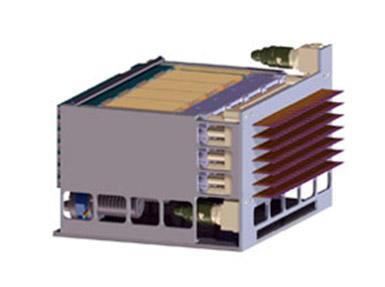Benefits of Active Antenna Arrays
Spectrum Control's Novel Solutions for Phased Array, E-Scan Radars
 Many systems are migrating towards AESA (Active Electronic Scanned Arrays), which include applications such as radar (tracking, surveillance, fire control and synthetic aperture), data links (Command and Control with Coms) and high-end SATCOM systems on aircraft that need to dynamically track satellites. AESA is part of a larger category of radar technology, sometimes referred to as Active Phased Array Radar (APAR) or Multi-Function Radar (MFR).
Many systems are migrating towards AESA (Active Electronic Scanned Arrays), which include applications such as radar (tracking, surveillance, fire control and synthetic aperture), data links (Command and Control with Coms) and high-end SATCOM systems on aircraft that need to dynamically track satellites. AESA is part of a larger category of radar technology, sometimes referred to as Active Phased Array Radar (APAR) or Multi-Function Radar (MFR).
Conventional Radar versus Active Phased Array Radar (APAR) or Multi-Function Radar (MFR)
Conventional radar relies upon a single, mechanically steered beam to detect targets. Positioning the beam can be a slow process, which contributes to reduced reaction times and leaves users vulnerable to attack. Furthermore, frequent movement is the cause of mechanical errors, which may be difficult and/or time consuming to fix.
Active Phased Array Radars (APARs), such as MFRs (Multi-Function Radars), are now commonplace in many new systems and provide multiple target tracking and surveillance by means of electronically steering multiple (independent and/or grouped) beams. Because the MFR has no need of moving parts, it is offers significantly improved reliability over conventional radar.
Active Array MFRs exploits the ability of its phased-array antenna-populated by multiple discrete T/R modules to electronically steer the radar beam virtually instantaneously, without mechanical movement, in any required direction to perform surveillance and multi-target tracking tasks (these being interlaced so as to appear to be simultaneous). This enables a single MFR to perform high accuracy search, track initiation, multi-target tracking and (with the appropriate uplink) missile-guidance support from a single sensor installation.
Unlike a conventional radar's rotating array (which has a fixed data rate), an electronic scanning MFR can be varied to optimize the data rate for expected target activity. This is achievable because an MFR can manage its time and energy budget so that each operational function, such as volume surveillance, horizon search or target tracking, is performed in rapid succession. Each discrete task, characterized by the generated waveform type, processing mode and dwell or renewal time, is scheduled in real time under computer control, according to the prevailing scenario.
Also, active arrays MFRs generate power directly at the aperture so reducing losses and maximizing the energy in space. This is particularly important for reliable detection of targets with a Low RCA (Radar Cross Section) in clutter. Also, the multiplicity of transmitters in the array gives redundancy and graceful degradation in the event of system hardware failure.
Applications for Active Antenna Array Units
- Radar - Tracking, Surveillance, Fire Control and Synthetic Aperture
- Data Links - Command and Control with Coms
- High-End SATCOM Systems - Ideal for systems on aircraft that need to dynamically track satellites